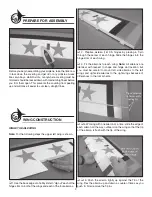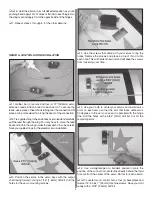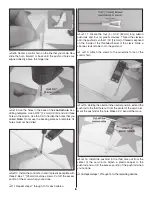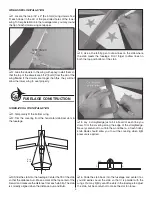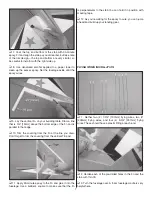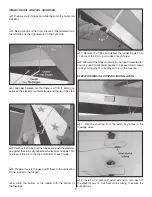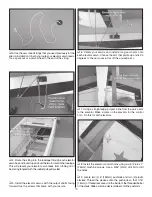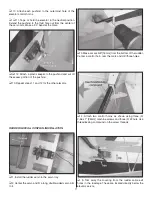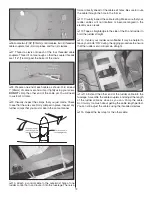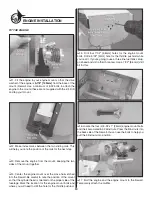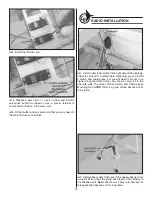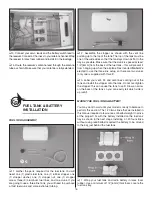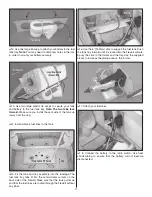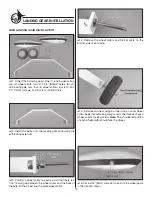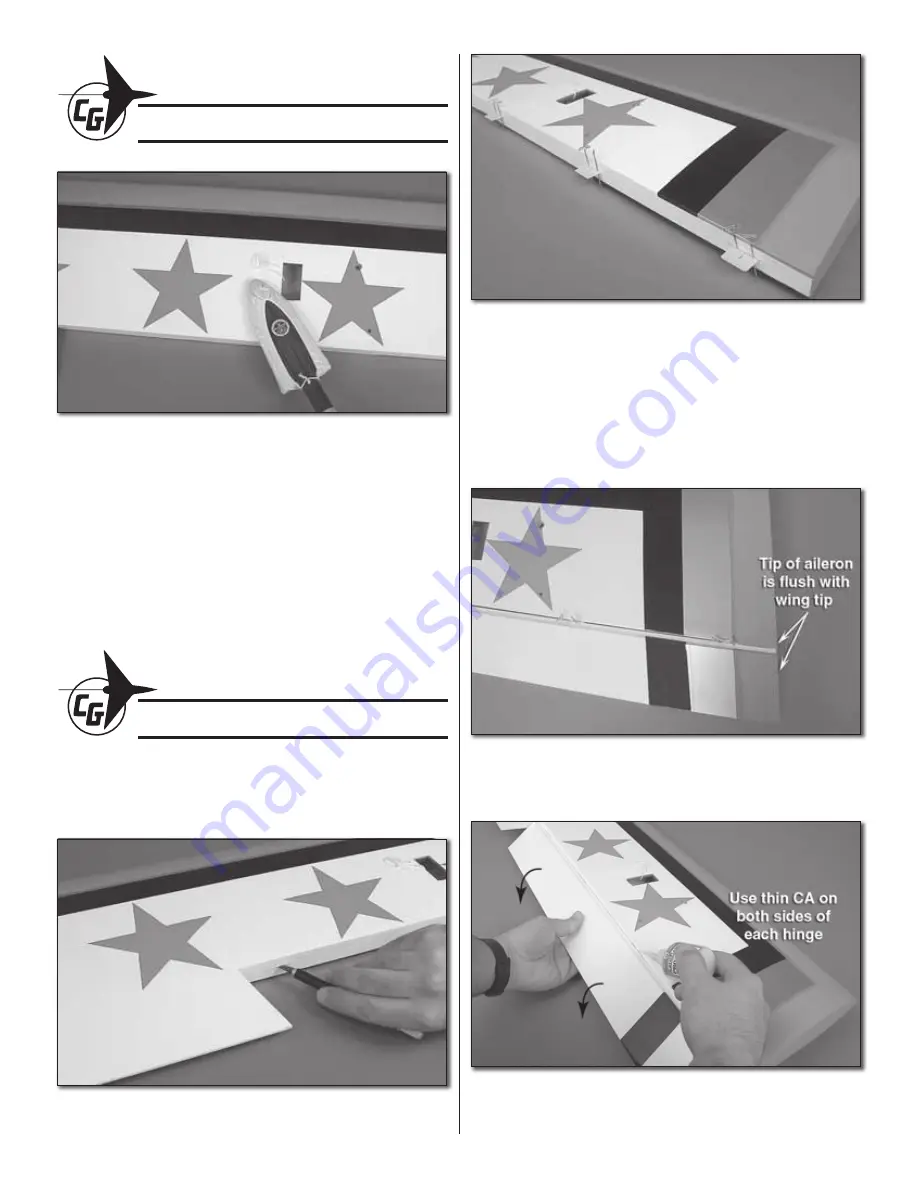
3
PREPARE FOR ASSEMBLY
Before you begin assembling your airplane, take the time now
to tack down the covering and get rid of any wrinkles. Areas
like servo bays, stab/fi n slots, or anywhere covering must be
trimmed should be tacked down with medium/high heat before
you trim them open. This prevents the covering from peeling
up and will make it easier to cut clean, straight lines.
WING
CONSTRUCTION
HINGE THE AILERONS
Note:
For the following steps the upper left wing is shown.
❏
1. Use the back edge of a hobby knife to “dig out” each of the
hinge slots on both of the wings and each of the four ailerons.
❏
2. Prepare sixteen (16) CA hinges by placing a T-pin
through the center of each hinge. Slide the hinges into the
hinge slots of each wing.
❏
3. Fit the ailerons to each wing.
Note:
All ailerons are
identical with respect to shape and hinge slot location, but
you must be careful to mount left side ailerons to the left
wings and right side ailerons to the right wings because of
differences in the trim scheme.
❏ ❏
4. Working with one aileron at a time, slide the edge of
each aileron all the way outboard on the wing so that the tip
of the aileron is fl ush with the tip of the wing.
❏ ❏
5. Push the aileron tightly up against the TE of the
wing. Flex the aileron up and down a couple of times as you
push in. Now remove the T-pins.



